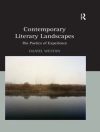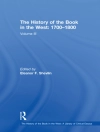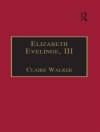Gothic Romanticism: Wordsworth, Architecture, Politics, Form offers a revisionist account of both Wordsworth and the politics of antiquarianism in the late eighteenth and early nineteenth centuries. As a historically-driven study that develops a significant critique and revision of genre- and theory-based approaches to the Gothic, it covers many key works by Wordsworth and his fellow “Lake Poets” Samuel Taylor Coleridge and Robert Southey. The second edition incorporates new materials that develop the argument in new directions opened up by changes in the field over the last decade. The book also provides a sustained reflection upon Romantic conservatism, including the political thought and lasting influence of Edmund Burke. New material places the book in wider and longer context of the political and historical forms seen developing in Wordsworth, and proposes Gothic Romanticism as the alternative line of cultural development to Victorian Medievalism.
Tabella dei contenuti
Preface to the Second Edition.- Introduction.- Romantic Poets and Gothic Culture.- Radical Gothic: Politics and Antiquarianism in Salisbury Plain (1794).- “By Gothic Virtue Won”: Romantic Poets Fighting the Peninsular War.- Wordsworth’s Gothic Education.- Interchapter. The Staring Nation.- Futures Past: Temporalization and Tradition in “Michael” (1800).- The Style Historic: The Gothic Line from Wordsworth to Hardy.- Conclusion. Gothic and Theory: The Reflecting Word.
Circa l’autore
Tom Duggett is Senior Associate Professor of Literature at Xi’an Jiaotong-Liverpool University (XJTLU), China, and honorary fellow of the University of Liverpool, UK. He has published widely in journals including Review of English Studies, Romanticism and The Wordsworth Circle, and recently produced a two-volume scholarly edition of Robert Southey’s historical dialogue, Sir Thomas More: Or, Colloquies on the Progress and Prospects of Society (2018). He serves as an Advisory Editor of the journal Romanticism.












